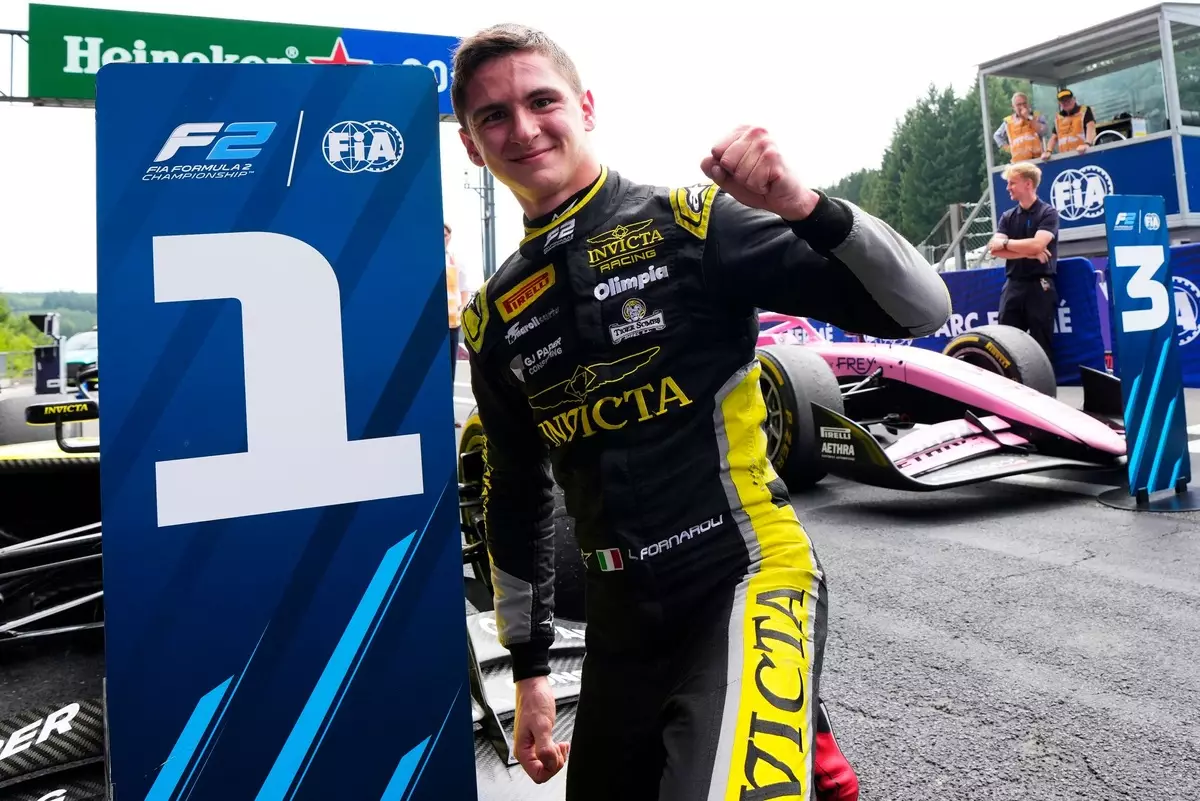In the high-octane world of motorsport, the path to Formula 1 is often marked by belonging to prestigious driver academies and following a well-trodden trajectory through successively higher series. Yet, Leonardo Fornaroli stands as a compelling anomaly—an elite driver leading F2 in his debut season yet without the backing of F1’s formal development programs. His situation raises critical questions about how talent is identified, nurtured, and ultimately given opportunities in one of the world’s most competitive sports. Unlike most of his peers, who often cruise through the ranks with institutional support, Fornaroni’s impressive performance appears largely unsupported by the traditional machinery, hinting at a deeper, perhaps overlooked, talent.
This unassuming yet dominant figure is a textbook example of what some analysts call the “Moneyball” approach—relying on data, consistency, and performance under pressure rather than flashy moves or media presence. His rise is not just a testament to natural skill but also challenges the conventional wisdom within the racing community: that success in the junior ranks, especially as a rookie, must be accompanied by a sponsor network or academy backing to translate into an F1 seat.
Breaking the Mold: From F3 Champion to F2 Leader
Fornaroli’s journey is as intriguing as his current standings. Having claimed the F3 title last year with Trident—a team recently famed for nurturing Gabi Bortoleto into a race-winning force—Fornaroli made the bold step into F2 without the structured support chain that typically accompanies such a move. His predecessor, Bortoleto, was swiftly snapped up into Sauber’s F1 program after climbing the ranks, illustrating how quickly performance in junior categories can translate into F1 opportunities when backed by an academy.
However, Fornaroli’s case diverges sharply from this pattern. Despite his consistent high-level performances, he remains unattached in a formal manner to any F1-linked development organization. This discrepancy fuels debates about whether talent alone is enough or if the machinery of teams and academies still hold unrivaled sway. His current performance—leading the championship without any F1 support—raises a provocative question: are we missing a superior talent because it doesn’t fit the typical pathway?
James Robinson, Invicta team principal, openly marvels at Fornaroli’s raw talent, describing him as “absolutely mind-blowing.” Robinson emphasizes that Fornaroli’s ability to perform consistently and execute race strategies flawlessly makes him not only a potential future F1 driver but perhaps an underappreciated gem—an unpolished diamond that could shine brighter than most expectations suggest.
The “Moneyball” Driver: An Understated Mastermind
Robinson’s comparison to the “Moneyball” methodology underscores Fornaroli’s style—methodical, data-driven, and effecting results through precision rather than spectacle. Unlike many young drivers who lean on aggressive overtakes or flamboyant podium celebrations to attract attention, Fornaroli’s game is built on unwavering consistency and mental resilience.
His journey demonstrates that performance under pressure and the ability to deliver stable, incremental progress can outweigh a flashy persona. For example, his race wins—coming off a period of almost no victories since 2021—highlight a driver who has cultivated patience, adaptability, and execution. His recent race wins, especially after a prolonged drought, are signs of maturity rare for someone still relatively new to the demanding environment of F2.
What makes Fornaroli’s situation even more remarkable is his apparent immunity to the spotlight. He operates quietly, preferring performance over publicity, which may have caused him to be overlooked by teams that prioritize marketability alongside raw talent. Yet, this very trait could make him an invaluable asset for F1 teams seeking a reliable and meticulous tester—someone who can provide precise feedback and help develop the car systematically over the long term.
Why F1 Teams Should Reconsider Their Talent Scouting
The prevailing narrative in F1 is that star drivers emerge through academies, social media hype, and large sponsorship backing that complements talent. But Fornaroli’s rise calls into question whether this is the best method for identifying genuine talent. His case suggests that F1 teams might be undervaluing drivers who excel in consistency, adaptability, and analytical skills—traits that are crucial for modern racing but do not manifest through overt charisma.
Robinson openly criticizes the fact that Fornaroli remains unallocated to an F1 team ahead of the upcoming season. “It’s absolutely mind-blowing that someone so talented isn’t already snapped up,” he states. Such a stance reflects a potential misalignment within the ecosystem of talent development—where the focus on marketable prospects sometimes overshadows the silent but potentially transformative driver skills needed to develop a competitive car.
If F1 is serious about technological progress and performance development, wouldn’t it make more strategic sense to embrace these “Moneyball” drivers—those who can provide data stability, technical feedback, and consistent lap times—over those who merely flash on social media or perform only in overtly exciting moments? Fornaroli embodies the qualities of a driver who, if given the right opportunity, could become a cornerstone for team development, rather than just a celebrity driver.
Facing the Future: Hidden Potential or Overlooked Genius?
Fornaroli’s story is a reminder that talent often resides in unexpected places, waiting for the right context to flourish. His understated approach, relentless focus, and consistency set him apart from the stereotypical image of a star driver. Yet, the question remains—will modern F1 teams recognize his worth before it’s too late?
The traditional pathway to the sport’s top tier has been set in stone for decades: champion in junior formulas, backed by an F1 academy, and gradually promoted. But Fornaroli’s case suggests a potential paradigm shift: excellence should not be confined to those already within the inner circles. If F1 truly values technical mastery and long-term stability, drivers like Fornaroli should be considered and nurtured actively.
His remarkable progression without the trappings of sponsorships, personality-driven marketing, or academy backing may be the most compelling proof that he deserves a shot—not just as a racing talent but as an essential element of the evolving chessboard of F1 development strategies. Whether or not the traditional F1 ecosystem recognizes this now, the future might very well belong to those who can combine talent with strategic thinking—qualities Fornaroli demonstrates in abundance.


Leave a Reply